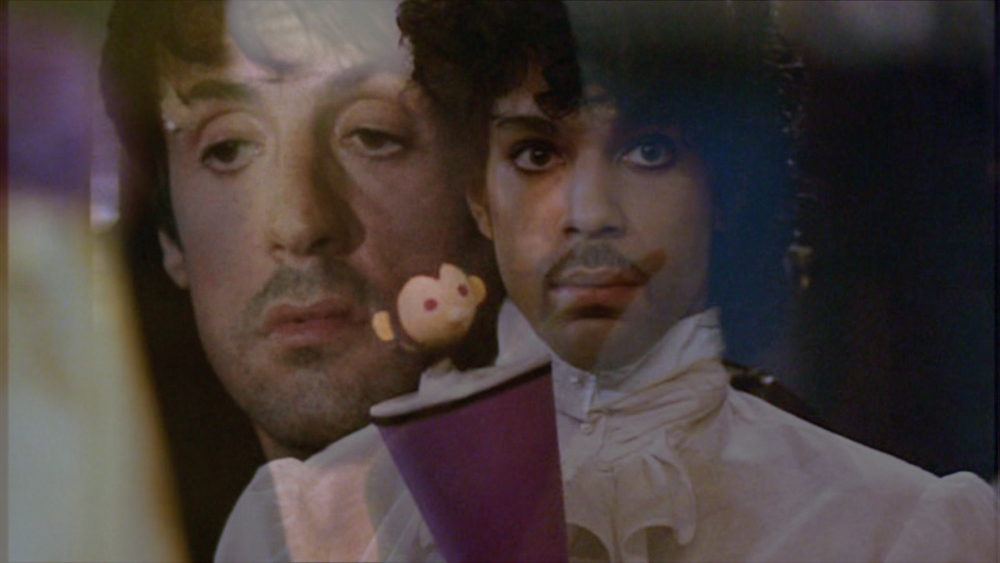
This past week, I’ve been ingesting a lot of Prince-related media and re-reading a ton of Dave Kehr Reader capsules. Let’s rock.
—
Purple Rain (Albert Magnoli, 1984)
The high water mark of 20th century pop hagiography. It exists in this singular state of being both a pure hit of Prince while still being tempered in some way. Maybe that’s the writers insisting that this be a run-of-the-mill 80s melodrama. Maybe that’s director Albert Magnoli trying to figure out what the hell to do with Prince when he’s not shrouded in darkness or bathed in stagelight. And there’s the rub: 1987’s Sign “O” the Times is a more distilled version of this same concept, mostly free of narrative, and with 50% more bangers.
That said, this movie transcends its faults through purity of execution. This movie about Prince becoming the best is only possible because Prince is the best; the aural bedrock of this movie is one of the best albums, if not the best album of the 80s. All of the music the bad guys play? He wrote it, and played most of the instruments on it. Same goes for his girlfriend’s group. This may be a vanity project, but Prince had the skills to justify its existence as such. It’s the one movie where a performer gets a classic aw-shucks standing O at the end and it doesn’t feel hackneyed or dumb. It works because the dude just played fucking “Purple Rain.”
—
Cobra (George P. Cosmatos, 1986)
A strange piece of post-Dirty Harry urban paranoia; people in pantyhose masks slashing the throats of “the weak” (in this case, women, children, and immigrants; thanks, sociopolitical climate of the Reagan era!) and cops shackled by the very laws they enforce. It’s all pretty standard stuff for an 80s Cannon jam: oodles of violence, crazy stunts, a couple of great chase sequences, and a lot of spackle keeping it together. It also has that smogged-out look that makes California look like the world’s biggest shitheap (this is a good thing).
But what makes it the most strange, and therefore the most compelling, is Sylvester Stallone. If his collected body of work indicates anything, it’s that he is the world’s most violent goober, a man with two major tics: bloodshed and sentimentality. He’s a chaotic-good gunslinger until he’s not, and when he isn’t, he’s playing with bobbleheads or doing a lame-ass prop bit with a decorative hamburger. When he isn’t writing one of the grizzliest deaths I’ve seen in a movie (conceptually, not visually), he writes a character whose main characteristic is his affinity for sweets. It’s this kind of idiosyncrasy that makes Sly so compelling, and his movies so intriguing.
—
Something Wild (Jonathan Demme, 1986)
This is a movie that contains its own perfect metonymy: the Feelies (!!!) playing “I’m a Believer” and “Fame” at a high school reunion in rural Pennsylvania. Also, there should be more movies with groups of dudes rapping outside of a gas station just because.
Something Wild is a uniquely American masterpiece, existing mostly in hotel rooms, diners, convenience stores, apartments, and the open road. There’s an intoxicating mix of 80s New York cool (Byrne, Cale, Anderson) and pastoral charm on display, scored in snatches by art pop, blues, reggae, garage rock, hip hop, and new wave. The three leads are all magnificent, but Melanie Griffith deserves special mention for her performance as Lulu/Audrey. She gives what could have easily have been a manic-pixie performance a lot of depth and edge (though this has a lot to do with the screenplay and Demme’s direction, too; they bother giving her a personality as opposed to just have her be a personality). That adaptability and shading can be applied to the whole film; it twists a little here and a little there, and then it twists hard and a whole new set of motivations and dynamics rears its head. This is prime filmmaking.
—
Sign “O” the Times (Prince, 1987)
One part concert film, one part kitchen-sink long-form music video, one part bizarro noir melodrama. There’s a story about a love triangle interwoven through the set, but the focal point is Prince the performer. Watching him sing, play, and move at the height of his power over the course of ~80 minutes is an experience like no other (the band going Full Jazz in the middle of the set is something else, too). But above all else, it’s fun as hell. There is joy, and therefore salvation, in performance, in sensuality, in big emotions, and in the communal experience. Music saves.
RIP you magnificent weirdo.



 Derek
Derek
 Isabelle
Isabelle